Simmer Burners--What's the Big Deal?
I know many people posting here place a lot of value on a rangetop being able to put out very low heat for simmering.
I'm a professional chef and i honestly don't understand what the importance of this is. There are about 10 easy work-arounds for situations in which i want more gentle heat on a pan. restaurants don't have any simmer burners, anywhere, and we manage pretty well.
I'm not looking to start an argument here (although i don't ever mind a good debate), but can those of you for whom the simmer function is so important please explain it to me?
What do you use your simmer function to do? Give me concrete examples, please. Do you simmer soups, sauces, use the burners for melting....what?
What uses of the simmer can't be replicated with simple work-arounds like sliding a pot half-off the burner, elevating a burner grid, or just using the microwave to melt your butter or chocolate?
Thanks in advance. I have a simmer burner on my range, but haven't yet had the occasion to use it. Maybe I'm missing out on something great?
Comments (46)
weissman
15 years agoI'm sure there are workarounds but as a serious home chef, I find having a low simmer on all my burners very convenient. Melting butter is one thing I use it for - I can put the butter in a pot and forget about it until I need it. Keeping things warm after they're done is another thing - I've left things on simmer for hours - even forgetting about them - without things boiling down or burning on. Could I live without the very low simmer - yes - I did for many years - but now that I have it I'm very pleased with it.
Related Professionals
Euclid Kitchen & Bathroom Designers · Hemet Kitchen & Bathroom Designers · Ojus Kitchen & Bathroom Designers · Southampton Kitchen & Bathroom Designers · Holden Kitchen & Bathroom Remodelers · Franconia Kitchen & Bathroom Remodelers · Independence Kitchen & Bathroom Remodelers · Lomita Kitchen & Bathroom Remodelers · Spanish Springs Kitchen & Bathroom Remodelers · Spokane Kitchen & Bathroom Remodelers · Superior Kitchen & Bathroom Remodelers · Walnut Creek Kitchen & Bathroom Remodelers · Langley Park Cabinets & Cabinetry · Key Biscayne Cabinets & Cabinetry · Maywood Cabinets & Cabinetryedlakin
Original Author15 years agowhat, specifically, do you use a simmer burner to keep warm? sauces? stews? whole finished dishes? covered or uncovered?
cpovey
15 years agoI have wondered this too.
Melting chocolate without a double boiler seems to impress a lot of people. Why is this? What is so hard about putting a stainless mixing bowl with chocolate chips or bits over a pot of hot/simmering water?
The only thing that occurs to me is that unlike restaurants (you) or catering companies (where I work), at home people are doing smaller quantities, and it can be more difficult too simmer small quantities. But as you said, slide half the pot off the burner, raise it up somehow (make a ring of aluminum foil or flip the grate over, heat over a pot of hot water, etc. Lots of methods available for lowering the heat.
weissman
15 years agoOk one example of something I keep warm is mash potatoes - they keep perfectly warm on the simmer setting (covered) without drying out or burning - I can keep the excess on the range throughout the meal instead of putting them in a dish and having them get cold on the table until people are ready for seconds. cpovey is right - a good simmer is useful for the home cook who is doing smaller quantities than a professional chef.
bluekitobsessed
15 years agoSauces that require stirring, hence aren't MW-friendly, sauces that should not be made in a MW-friendly pot, and/or ease of use over the workaround (yes, there is always a workaround). Last night I made hot fudge sauce with the same Joy of Cooking recipe I've been using since college. Old-cooktop-era, I would have nuked the chocolate and butter in my Corningware pot (same one I've been using since college) in the MW, then finished cooking in the Corningware, which isn't the greatest pot for cooking, or moved the melted mess into a better cooking pot. (Years ago I improvised a double boiler by putting a pot in a water-filled pan, but it never melted the chocolate evenly and I had all sorts of stirring and splashing incidents, so I moved to the MW.) On my Thermador, I was able to start cooking in a better pot, stir while the chocolate & butter melted, and finish in the same pot. End result tasted a bit smoother, less grainy (which I attribute to finishing the sauce in the better pot, not the iritial MW'ing), overall just better quality. Not a huge difference but enough to make me happy with my Thermador :)
sara_the_brit_z6_ct
15 years agoWhile one can easily slide the pan over to one side, it isn't very fuel efficient, which may be more of an issue to homeowners than professionals.
Plus, in a commercial kitchen, you're still working at that workstation, while the flame is uncovered: home cooks may be distracted by the dog wanting to be let out, children generally getting underfoot, the phone ringing - and an exposed flame may be a bit more of a concern when there are small children about.
I'm just musing about the different styles. I haven't actually used my Bertazzoni cooktop yet, because the kitchen's still unusable.
edlakin
Original Author15 years agomaybe it's just my cooking style. i can't say i really do a lot of simmering of *anything*.
the only things that i regularly want low heat for are things like chili, tomato sauce, or soup, which i tend to make in a larger quantity, so the lowest setting of my normal burners is always fine to simmer them.
i almost never make "sauce", per se, that is, in a separate pan. i make sauces in conjunction with the dish, usually a la minute pan sauces.
if i do a stew or a braise, i usually start it up top and then put it into the oven for the long slow heat.
that's why i asked. perhaps my cooking style has been unduly influenced by cooking in restaurants where there's not a simmer burner. over the years, i've just become accustomed to not having it as an option, so now i just don't even think about it.
i've had my new bluestar for a month or so now and i don't think i've even *lit* the simmer burner except to check that it worked after it was first installed.
i feel like i'm missing out on something potentially cool. help me out here, all you simmerers!
ya_think
15 years agoSimmer small quantities of rice. Hold an emulsion without it breaking. Keep a finished meal warm without it overcooking.
Yes you can slide your pot to half-burner. But unless you're on a 30" range now you are encroaching on a neighboring burner. Sure there are simmer plates, or even a simple ring of foil. You can hold food in a low oven instead of stovetop. But why would someone opt for this when there are better/easier options?
From what I have seen, most of the simmer discussions around here compare higher end ranges. If you are spending a premium for a performance range, is it not reasonable to expect performance on both ends of the spectrum? People buy Corvettes because they are fast. But what if they came standard with a couple logs rather than a parking brake? Those logs could do the same job, but I do not think it would be very impressive.
edlakin
Original Author15 years agoOk one example of something I keep warm is mash potatoes - they keep perfectly warm on the simmer setting (covered) without drying out or burning - I can keep the excess on the range throughout the meal instead of putting them in a dish and having them get cold on the table until people are ready for seconds.
ok, thanks, weissman, that makes sense to me. i would've never thought to use it for that.
edlakin
Original Author15 years agoSimmer small quantities of rice. Hold an emulsion without it breaking. Keep a finished meal warm without it overcooking.
thanks. what type of emulsions?
asolo
15 years agoMy current range is electric smooth-top which has the burners lowest settings sub-divided further into five even-lower settings. I use them a lot for keeping things dependably warm or serving-hot without continuing to cook. Especially useful with sauces that break when overheated only briefly.
On the romantic side, our cooking/serving times sometimes find our amore rising to a point of compulsion. (Ah! Vino!) I like being able to push a couple of buttons knowing I can leave everything there and have it ready to serve when our temporary passions have abated without worry.
heartsurgeon
15 years ago"Ok one example of something I keep warm is mash potatoes"
i have to share a great tip with you...put (or even easier, assemble) your mash potatoes in a crock pot..pre-warmed on low. Put the cover on, your spuds will stay perfectly warm/hot for at least 1-2 hours...frees up a burner, gets the spuds out of the way. Learned this from a call-in to Sara Moulton's old tv show..a really great tip..
ya_think
15 years ago"what type of emulsions?"
When I was writing that I was specifically thinking of beurre blanc and hollandaise.
For these (and other examples given here) perhaps "simmer" is not really the right term. "Holding" might be better.
asolo
15 years agoThe ability to dependably control a given level of low heat throughout a range remains a desirable goal. Being able to do that -- and depend on the setting -- is a net benefit on any range, IMHO.
edlakin
Original Author15 years agoFor these (and other examples given here) perhaps "simmer" is not really the right term. "Holding" might be better.
thanks, that helps immensely. *now* i get it.
see, i often hold delicate sauces and such in the space between the two burners, or just in a warmish area near the cooktop. i don't really see any point in keeping a flame of any size on, say, a hollandaise sauce.
but i do now understand where you all are coming from.
rhome410
15 years agoWhat I'm missing in the question, I guess, is why have a work-around if we can avoid it's necessity? I have gas this time after years of 'working around' short comings of electric. I spent quite a bit for a good gas rangetop to have more precise heat control, whether high or low.
Wouldn't a pan half off a flame just burn on one the bottom of one side? And, like others have said, with kids around, I don't want a very hot pan half off a burner and flame coming up the half that's uncovered. Wouldn't I also be wasting fuel that way instead of turning it down to a simmer? 'Work arounds' tend to vary each time you do them, so this would lead to inconsistent results.
I don't simmer often, but what I can think of at the moment that I've used it for is rice and long simmering chili or other bean dishes.
I melt chocolate in the microwave or in the double boiler. I probably haven't had the simmer ability long enough to get used to using it for things like that.
asolo
15 years agoAnother place I use lower settings is for long-cook pots-full like spaghetti sauce and some stock preparations. Not exactly "simmer"...just enough for a bubble or two to come up -- sometimes a little more or less, depending. The resulting blending and subtlety of flavors over time superior to typical "simmer". Still all in the area of controllability of lower heat settings.
sara_the_brit_z6_ct
15 years agoOn the 'emulsion' thing - anything (like soup, or a delicate sauce) that you add cream or yoghurt to: yoghurt will easily separate (much easier than cream will).
And definitely for rice: cooking rice for two people needs a very, very low flame.
eandhl
15 years agoI don't' care for a dedicated "simmer burner" but I sure love that all the burners on my DCS go to a very low simmer. No boiling just a simmer. If I miscalculate timing anything I cook stays fine on a simmer. All of the above mentioned foods. I was never able to simmer without a boil on my old electric.
clinresga
15 years agoI use our simmer burner for polenta. Recipe I have come to rely on (from Cooks' Illustrated) relies on ability to keep it on heat but below point where any bubbling is occurring. Using a 3 quart pan on the high end of the simmer range on the cooktop does this perfectly.
You're completely right that there are workarounds, but it's quite nice not to have to balance pots on multiple grates or build rings of foil. I'll leave that to my kids. Looking forward to mucking around with the French top when the Lacanche arrives as another approach.
Still think asolo's "amore rising to a point of compulsion" is the best possible reason to have simmer. Now if I could only find a way to get the kids out of the house when we cook more often...
friedajune
15 years agoBolognese sauce. It only tastes authentic when it's been cooking on the lowest simmer possible (one or two bubbles tops) for 4-5 hours. I learned to make Bolognese sauce as a young girl from my neighbor's mother who was directly from Italy and could barely speak English. I am sure that when she was cooking in the Old Country she didn't have a Bluestar with a star-shaped simmer burner. Who knows what she had then, but she admonished me sternly that the "gravy" must cook 4-5 hours with only 1 or 2 bubbles. I don't have a Bluestar; I've accomplished the ultra-low simmer using one of those cast iron simmer plates on my burner. It's a PITA. I wish I had a low-simmer burner.
cat_mom
15 years agoOne thing we wanted in a new range, was the ability to simmer on ALL burners. Our old GE builders special 4-burner, had one simmer burner, and at that, was too hot to cook rice for two people. We had to use extra water in the sauce pan, and then prop the pan on a second grate on top of the simmer burner grate with the flame as low as it would go in order to simmer rice for two without all the water boiling away before the rice cooked.
You're completely right that there are workarounds, but it's quite nice not to have to balance pots on multiple grates or build rings of foil. That was one thing I really looked forward to with my new range--no more work-arounds.
danielle00
15 years agogreat burner if you are concerned about a sauce separating. that is mostly what I use mine for. too much heat and you're left with curdled goop instead of a lovely, smooth sauce.
amysrq
15 years agoFor me, it's all about just holding components of a meal. I am a good cook (great sometimes) but my timing is bad. Or the doorbell rings and the dog wants to eat the UPS guy. Or I my kid needs some "guidance."
Way back when, amore was on the menu and those simmer burners would have come in handy! Well...four more years and she'll be off to college. Maybe we'll be holding things more often.
3katz4me
15 years agoI make spaghetti sauce that simmers for three hours. I had a range incapabable of simmering so it boiled the sauce for three hours - requiring frequent stirring to prevent it from burning for three hours. I worked around that with a simmer plate which was marginally successful in preventing the boiling. So I'd saute some onions and garlic and brown the meat at higher heat. Then remove the pan - put the simmer plate in place - and then keep checking so make sure not boiling/burning. A burner that simply simmers is more convenient for me. As others have pointed out, pulling the pot halfway off the flame encroaches on the other burners I want to use for something else. On that particular range it also put the pot at risk of tipping off the grate.
igloochic
15 years agoI'm a lazy baker and enjoy melting chocolate without a water base...so the simmer burner is helpful there. We also do sauces and are looking forward to having the burner for those as well. And we have a huge range, with just about any burner we could wish for..cuz we don't want to "work around" :) I am looking forward to the french top for sauces, and think it might be just the trick for melting sugar. We also like a slow cooked rice :)
We have a two year old who we'll be teaching to cook soon. Pots balanced on the edge of a burner aren't a good idea for an at home kitchen.
sanborn5
15 years agoI never thought it was a big deal until I tried to make spaghetti sauce, cream soups, stews or sauces, and melting butter on our low end gas stove at our cabin. So then I realized I should just relax and heat things up when I am there.
However, when we built a new house where we reside I knew with gas I needed a simmer burner. I may not be a chef but I cook all the time from scratch. I have cooked for over 35 years and have never cooked or baked as well as I do on my new wolf D/F. My family has commented many times. It sure makes life easier with the simmer burner when I make Italian Sauce in a kettle large enough that I almost need a stool to stir it. Less of a chance of it sticking on the bottom.stevep2005
15 years agoAside from many of the 'simmer' tasks mentioned already, the "simmer" burner on my Bluestar is more about flame diameter than how low the flame can be set. All of the burners on the BS (and I suspect many of the other quality ranges out there) manage a nice low simmer-quality level. The BS simmer burner, producing flame from only the center ring of the star, is my burner for my small 1-1.5 quart pans and smallest fry pans. I can run that burner, regardless of setting, without flame running up the side of the small pans and having all the heat directed into the pans rather than up the vent hood.
breezy_2
15 years agoI guess this is the perfect follow up to the 22,000 vs 21,000/sealed vs open post. Generally, I agree with simmer not being as big a deal but then I believe my BS simmers very well. It certainly is possible to improvise for a simmer by using simmer plates et al but you certainly cannot do the opposite to boost power so my emphasis was power and not the "can it melt le chocolat bar in tact" thing.
I have found that the 15K BS burners have an incredibly low simmer to the point that it will barely bubble the smallest of pots. The 22K burners will only simmer huge pots but that is not why I wanted 22k of power. To agree with steve, the simmer burner is great for really small pots which are a constant in any of my large cooking efforts and it will go so low as to barely warm butter for as long as you care to leave it on the burner. The Wolf open burner simmer dot is very low as well (had one) but unless you are using something like All Clad Copper Core, it simmers with a significant hot spot in the center that requires constant stirring. The 15K BS burners do not creat a hot spot and do not require constant stirring for most things (and cookware)I have experienced.
I agree that if I had poor simmer capability it would be a real problem but for the 2 units I have had experience with, simmer has not been a real challenge.
annab6
15 years agoI am late coming to this thread but have a question to those who said they use the simmer feature to keep things warm. What foods and in what quantities can be kept warm this way?
The simmer burner on my current range could be used to keep a medium size pot of soup warm but not anything smaller.
We have multiple schedules in the family and I was looking at warming drawers to see if I can fit one into the new kitchen, but if the simmer can help somewhat than may be I don't need one at all.
asolo
15 years ago"What foods and in what quantities can be kept warm this way?"
In my experience, any quantity in any pan for more hours than I've yet done it. My current range is GE electric smooth-top which has the burners lowest settings further sub-divided into five even-lower settings.
Maybe used wrong terminology. I get easy adjustment for any level of "simmer" but also many variations of "sub-simmer" down to barely warm.
If you prefer gas, I see no way to duplicate this easy control.
oruboris
15 years agoI think it's a feature worth considering-- if you are paying $5k+ for a range and trying to decide between two that are very similar models, the simmer burners can be one way of breaking the tie.
My new Bluestar has only one simmer out of 6 burners, but for my way of cooking-- hot and fast, generally-- I'm OK with that. Kitchen still isn't done, so I haven't exactly had an opportunity to put that theory to the test.
eandhl
15 years agoannab6, two examples I have done. 2 qt pan, 2 potatoes boiled and mashed. I left on simmer for 20 mins, covered and no sticking and they were perfect. 2 qt pan, enough peas for 2 and DH was 1/2 hr later than normal. No boiling, and not over cooked. It doesn't matter what I have done on any of the burners, of my DCS they all the simmer feature.
cdave
15 years agoAs a professional Chef I'm glad to see there are other Chef's here. While it is indeed true that we don't utilize simmer burners in the big kitchen we have far more options than a home owner and hopefully a lot more space.
At home I want a simmer feature to cook rice, or simmer any number of sauces or even pehaps to cook a stew in a covered cast iron pot, make stock etc. I think I use simmer or at least a very low setting at home during the course of every meal.
I'm not sure I care for a dedicated simmer burner in my situation simply because of burner availability (I have a 30" range). I would not choose one brand over the other based primarilly on how low the simmer would go but simmer performance is something I do consider. On any range or cooktop with only four burners I greatly prefer all burners have the ability to work at a simmer. I want my cooking sirface to work around my style not the other way around.chipshot
15 years agoYou mean there's more to simmer burners than showing off by NOT burning $20 bills?
While I prefer to use the warming drawer, there is definitely convenience in not having to transfer foods (such as mashed potatoes) that one wants kept warm.
sombreuil_mongrel
15 years agoRice, definitely. Keep a kettle hot (boils instantly if turned up to "low") all day without losing any water; a gas-fired instant hot. Tea for free without the wait.
Caseyysop1016
15 years agoedlakin,
How do you elevate the burner grid? I have had no success with a simmer plate on my gas range.ci_lantro
15 years agoI'm a stovetop cook and cook a lot of things like pot roast, Swiss steak, smothered steak, goulash...in a Dutch oven over a low burner on the stovetop. Prolly because I use the oven to store my skillet collection because I don't have enough storage & it's too much trouble to unload the oven!
annab6
15 years agowow, lots of uses for that simmer burner. Still sounds like not a substitute for a warming drawer when need to keep something warm for several hours? I always wish I had a warming drawer for keeping fried and roasted dishes warm, also appetizers while entertaining. Is there an "innovative" way to do that with the simmer burners and save the drawer space?
weissman
15 years agoannab6 - yes the answer is an oven which is all a warming drawer really is with moisture - you can put a pan of water in an oven at a low temperature to simulate a warming drawer and you also get the benefit of another oven when you need it
edlakin
Original Author15 years agoare warming drawers hooked up to water supply? how do they have 'moisture'?
weissman
15 years agoI think you have to put water into a resevoir in the warming drawer - I don't know if they make plumbed versions - I don't have a warming drawer. Some people swear by them, but if I had the room, I'd get a second oven.
Bryan
15 years agoThis has been a good thread. I agree there there are a number of good reasons to have a good simmer burner, even if it isn't used that often.
I used to have a DCS and I did love that all burners could go way down. I now have a Caldera, and it goes low by cycling the burner on and off. I don't like this as much, although it works fine most of the time. (I do like the layout of Caldera better).
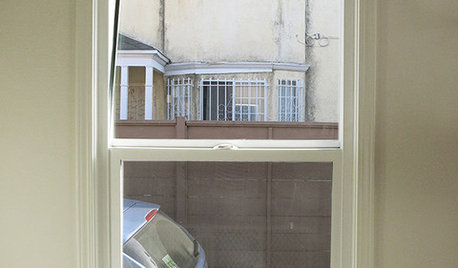
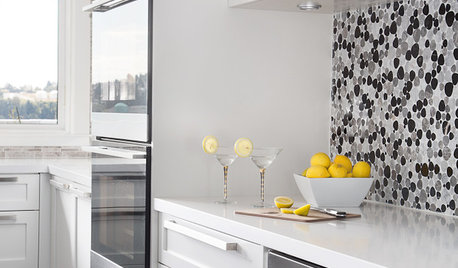
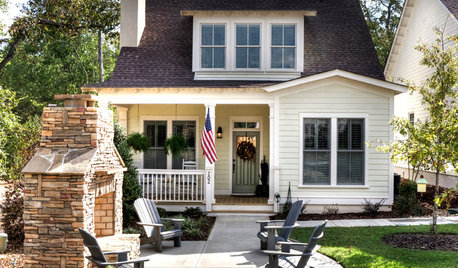
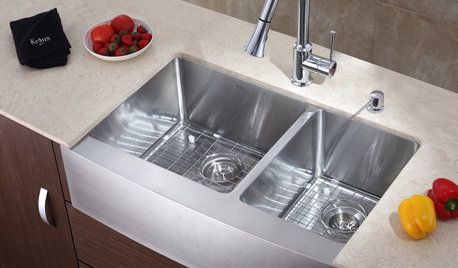
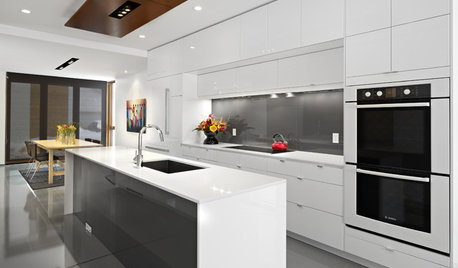
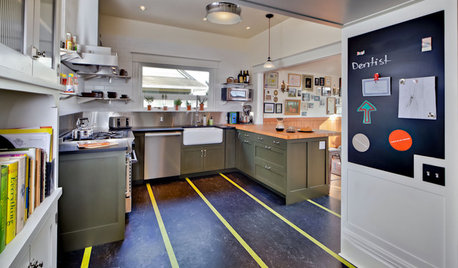

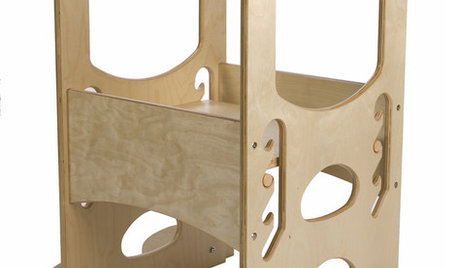

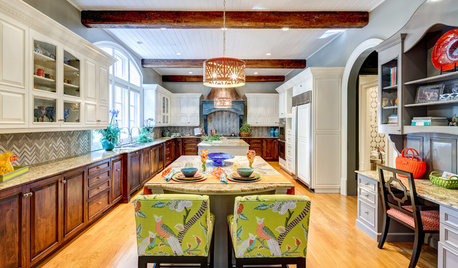







HU-383352814